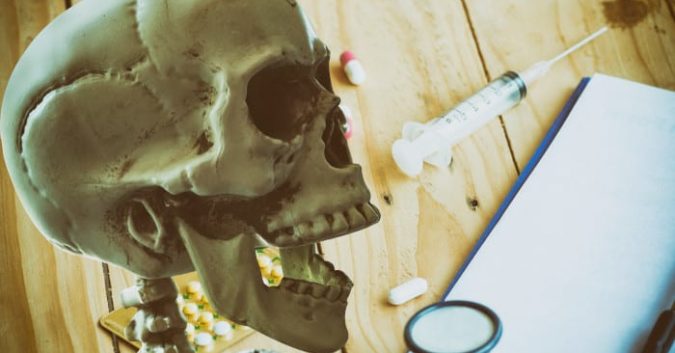Medical-device manufacturers and their armies of lobbyists are keen to have everyone believe that innovation always leads to better health. In some cases, that sentiment certainly turns out to be true, and innovation really does improve lives. But when new devices are rushed to market before their safety is sufficiently tested or their risks are properly understood, they can injure or kill people.
Due to the current device-approval system at the Food and Drug Administration (FDA), the vast majority of medical devices are approved for the market without any clinical testing. This means that the true risks of these devices are often unknown. In other words, some companies are finding out the risks of their devices by testing them on the American people.
It might sound like an exaggeration, but it isn’t: 82 percent of all the devices given FDA clearance last year did not require manufacturers to present any evidence from clinical human trials whatsoever.
The FDA has promised to update their device approval process, but any proposed changes do little to improve safety for the people who have already been hurt by a dangerous medical device. And the number of people hurt is astounding. A recent worldwide investigation documented more than 1.7 million medical device injuries and nearly 80,000 deaths in the last 10 years.
How Devices Are Approved Without Testing
In order for a high-risk medical device to enter the market, it must receive premarket authorization (PMA) from the FDA. Companies must show evidence that the device is safe and effective through human clinical trials. Only then can they receive FDA approval.
Running these type of trials costs time and money, but they allow researchers to better understand the risks involved with any given device. Most patients would feel more secure knowing that these tests had taken place, but manufacturers usually bypass this step to avoid costs and delays.
Most devices are approved through something known as the 510(k) pathway. Instead of using clinical tests to ensure the devices safety, manufacturers are allowed to submit what’s known as a “premarket notification.”
A 510(k) premarket notification, unlike premarket authorization, only requires manufacturers to demonstrate that their medical device is “substantially equivalent” to a device that is already on the market. In this scenario, the older device is known as a “predicate.” If the new device is close enough to the predicate in design and usage, it will receive clearance without any need of further testing.
The Dangers of Untested Medical Devices
There are obvious ways that manufacturers can take advantage of this – and they do. This loophole is the way that almost every device comes to market. Some predicates are decades old and being used to approve current devices that are vastly different.
Or worse, certain devices are still used as predicates even though they have recalled. It may seem impossible, but it’s true: Devices have entered the market because they were based on a previous device that was recalled due to safety issues. Looking at the sad story of surgical mesh, the problems are all too clear. And surgical mesh is just 1 example – 1 among countless others.
Lack of Testing Leads to Serious Surgical Mesh Injuries
Surgical mesh is used in repair operations after a hernia or pelvic organ prolapse to provide more support than ordinary human tissue provides. The side-effects from surgical mesh can be horrendous, and patients often have no idea of the risks. What’s even scarier is that the manufacturers of these devices sometimes don’t know the risks either.
A study published in 2018 revealed that every surgical mesh entering the U.S. market was cleared through the 510(k) pathway. That means there was not a single surgical mesh that was tested before it went on the market. Looking at the 77 surgical meshes cleared between 2013 and 2015, they found that:
- 97 percent were based on 6 surgical meshes from before 1976.
- 16 percent of recently cleared devices are connected to 3 predicate meshes that have been recalled for seriously injuring people.
This is only possible because manufacturers string together “substantial equivalence” claims in a weak chain that dates back decades. This chain of equivalence is no substitute for real research, and people are suffering because of it.
Other Dangerous Medical Devices
Metal-on-metal hip implants were allowed on the market because they were close enough to a predicate, not because they had been thoroughly tested. Nobody knew that the cobalt in metal-on-metal hip replacements could break down and poison the patient’s bloodstream.
If enough testing had been done, researchers would have uncovered this risk before patients felt the physical symptoms of injury or disease. Or, consider the women who have discovered a rare form of cancer associated with their breast implants. They were never warned about the risks – and manufacturers have gotten away with inadequate research.
Essure®, a form of so-called “permanent birth control,” that is implanted in women during a 10-minute procedure, has left women completely scarred. The implant, which was supposed to be safe and easy, often migrates inside a woman, causing tremendous pain or worse. Trying to remove the device often results in more complications. Bayer, the maker of Essure, has promised to pull the device from the market, which is good, but the company has never answered for not informing women of these risks.
These are but a few examples of a consistent trend that is all too common in the American medical-device market. Simply put: Certain medical devices are dangerous and present serious risks to patients, and in spite of this, they are all too easily allowed to enter the market.
